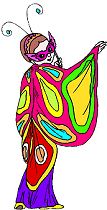Menopause is a time of enormous change. Wise women of all times have
found simple life-style changes can make their Change much easier. For
optimum health during and after menopause, do these two things: exercise
a different way every day and drink nourishing herbal infusions.
Exercise a different way every day
Take walks, lift weights, dance, garden, do yoga, try tai chi.
We all know how important exercise is for strong bones, healthy hearts,
resistance to diabetes, and weight maintenance. But did you know it
prevents depression too? By yourself, or with a friend, exercise is
one of the golden keys to a long, healthy life.
Drink Nourishing Herbal Infusions
Nourishing herbal infusions are the second key to vibrant elder years
and an easier menopause. They provide protein, minerals, phytoestrogens,
and special fats needed by menopausal women. Many common menopausal
problems can be connected to a lack of one or more of these nutrients.
Low protein leaves hair and skin dull, lifeless, and thin. Nourishing
herbal infusions, plain yogurt, lentils, and organic meats are excellent
sources.
Low levels of minerals leave the bones and heart deprived of calcium,
the immune system low in zinc, and the muscles prone to pain and spasms.
Nourishing herbal infusions, plain yogurt, seaweed, and organic chocolate
are magnificent sources.
Insufficient phytoestrogens
in the diet increase breast cancer risk and menopausal distress. Nourishing
herbal infusions, lentils, roots and seeds are the best sources.
Lack of high-quality fats, can lead to thyroid problems, immune system
stress, lack of energy, and blood vessel disease. Nourishing herbal
infusions, full-fat yogurt, organic chocolate, olive oil, organic butter,
nuts and seeds are superb sources.
To make a nourishing herbal infusion: Buy (or gather and dry) at least
one ounce of nettle leaf or oatstraw or red clover blossoms or comfrey
leaf. Place the ounce of dried herb in a quart jar. (One ounce equals
one full cup of dried herb.) Fill jar to the top with boiling water.
Cap tightly and allow to brew for at least four hours. Overnight is
fine. Strain and drink 2-4 cups a day. Most menopausal women prefer
their infusion iced, but you can drink it hot or at room temperature.
A little mint or sage may be added to change the flavor.
Stinging nettle (Urtica dioica) builds energy, strengthens
the adrenals, and is said to restore youthful flexibility to blood vessels.
A cup of nettle infusion contains 500 milligrams of calcium plus generous
amounts of bone-building magnesium, potassium, silicon, boron, and zinc.
It is also an excellent source of vitamins A, D, E, and K. For flexible
bones, a healthy heart, thick hair, beautiful skin, and lots of energy,
make friends with sister stinging nettle. It may make you feel so good
you'll jump up and exercise.
Oatstraw (Avena sativa) reduces high cholesterol, increases
libido, and strengthens the nerves. A cup of oatstraw infusion contains
more than 300 milligrams of calcium plus generous amounts of many other
minerals. Its steroidal saponins nourish the pancreas and liver, improving
digestion and stabilizing moods. Oatstraw is best known however for
its ability to enhance libido and mellow the mood. Do be careful whom
you share it with, or you may find yourself sowing some wild oats. In
Auryuvedic medicine, oatstraw is considered the finest of all longevity
tonics.
Red clover (Trifolium pratense) is better in every way
than its cousin soy. It contains four phytoestrogens; soy has only one
(isoflavone). Red clover infusion has ten times more phytoestrogens
than soy "milk," fewer calories, more calcium, and no added
sugars. Red clover is the world's leading anti-cancer herb; soy isoflavone
encourages the growth of breast cancer cells in the lab. Red clover
improves the memory; Japanese men who ate tofu twice a week doubled
their risk of Alzheimer's disease. Soy beverage can contain up to 1000
times more aluminum than milk, according to Sally Fallon, lipid researcher
and fat specialist. She believes that "the highly processed soy
foods of today are perpetuating . . . nutrient deficiencies. . . ."
Comfrey (Symphytum) leaf is free of the compounds (PAs)
found in the root that can damage the liver. I have used comfrey leaf
infusion regularly for decades with no liver problems, ditto for the
group of people at the Henry Doubleday Research Foundation who have
eaten cooked comfrey leaves as a vegetable for four generations. Comfrey
is also known as "knitbone," and no better ally for the woman
with thin bones can be found. And, don't forget, comfrey contains special
proteins used in the formation of short-term memory cells. Its soothing
mucilage adds flexibility to joints, eyes, vagina, and lungs.
